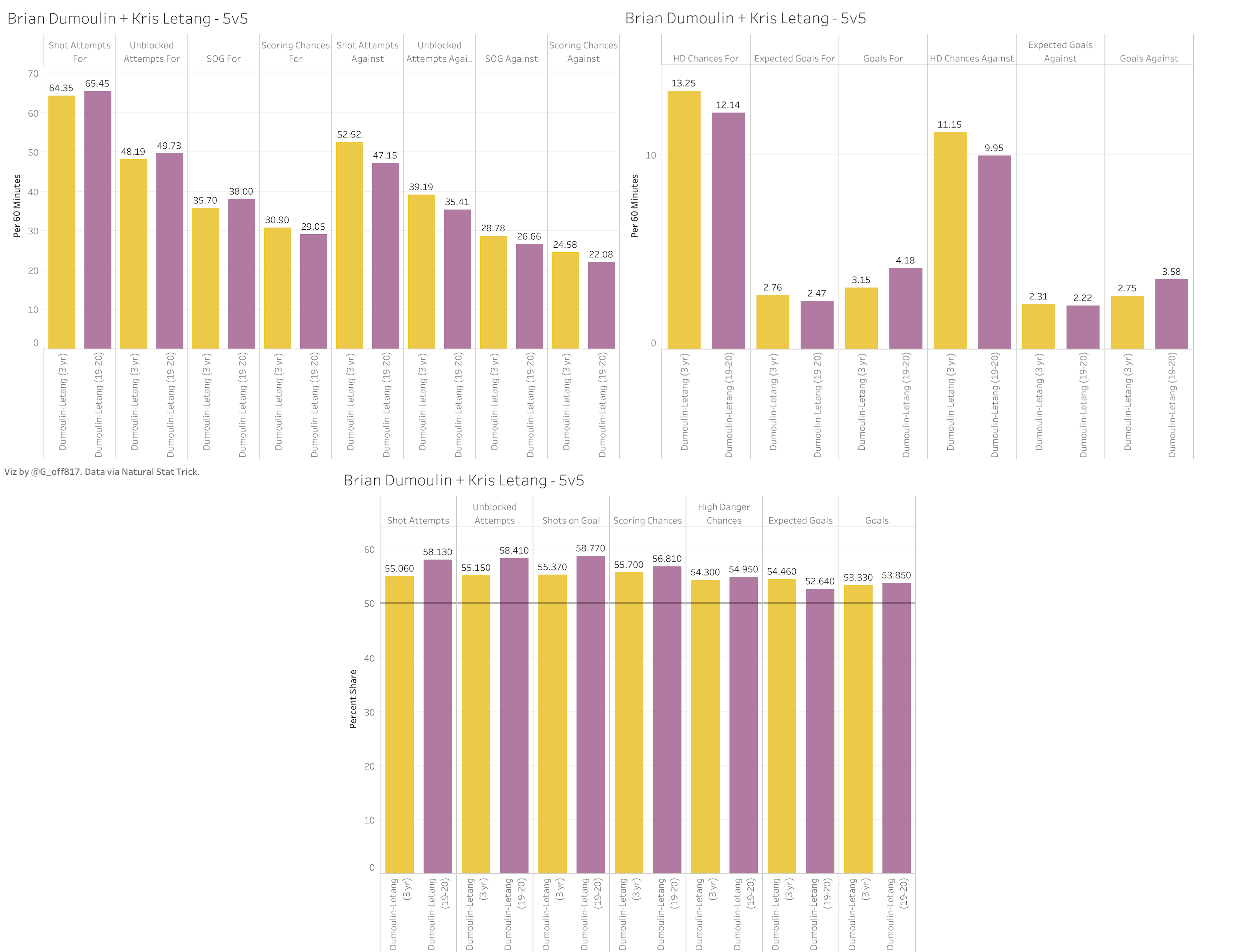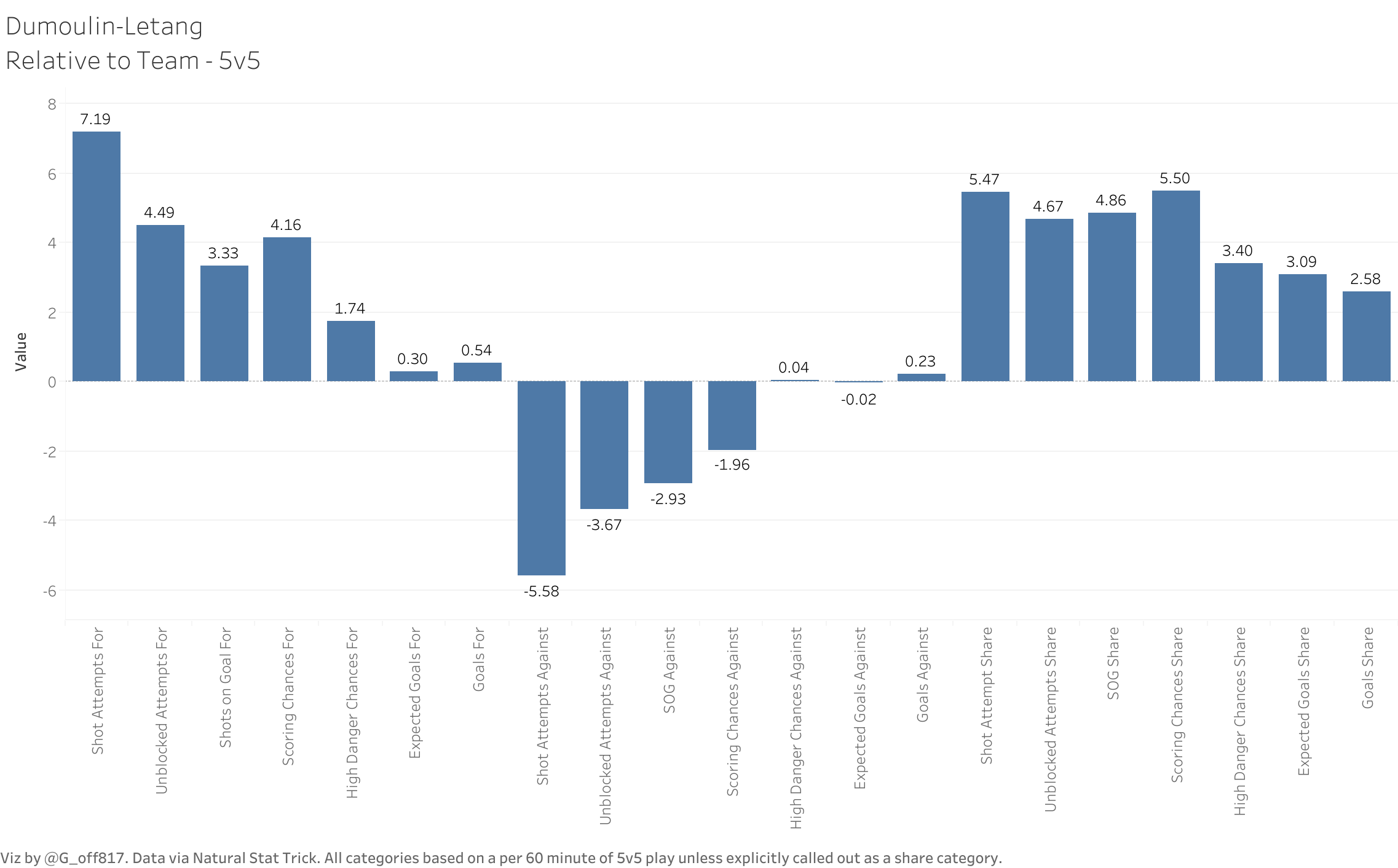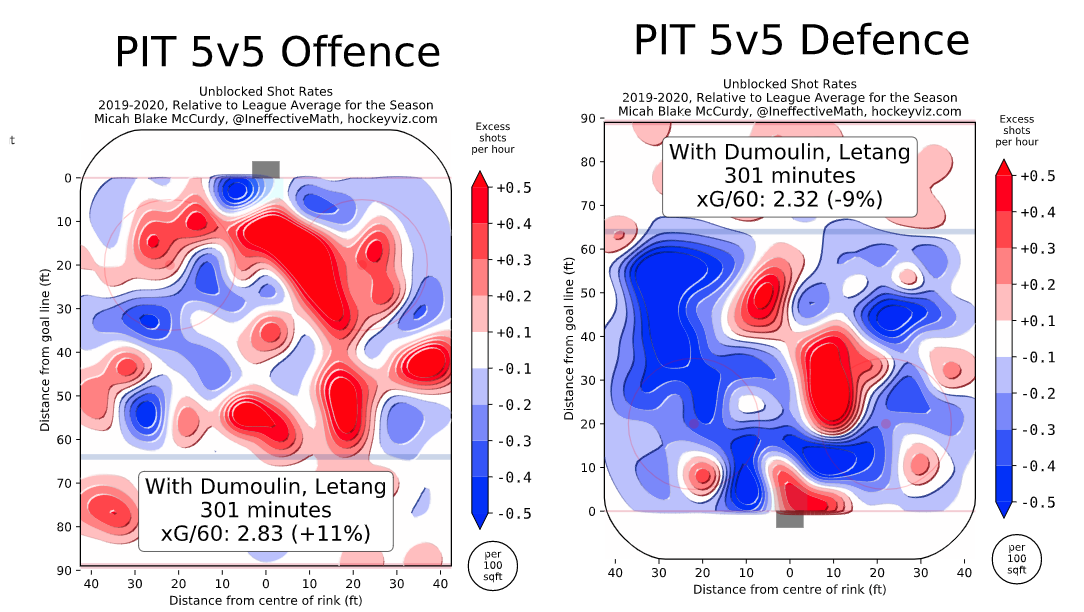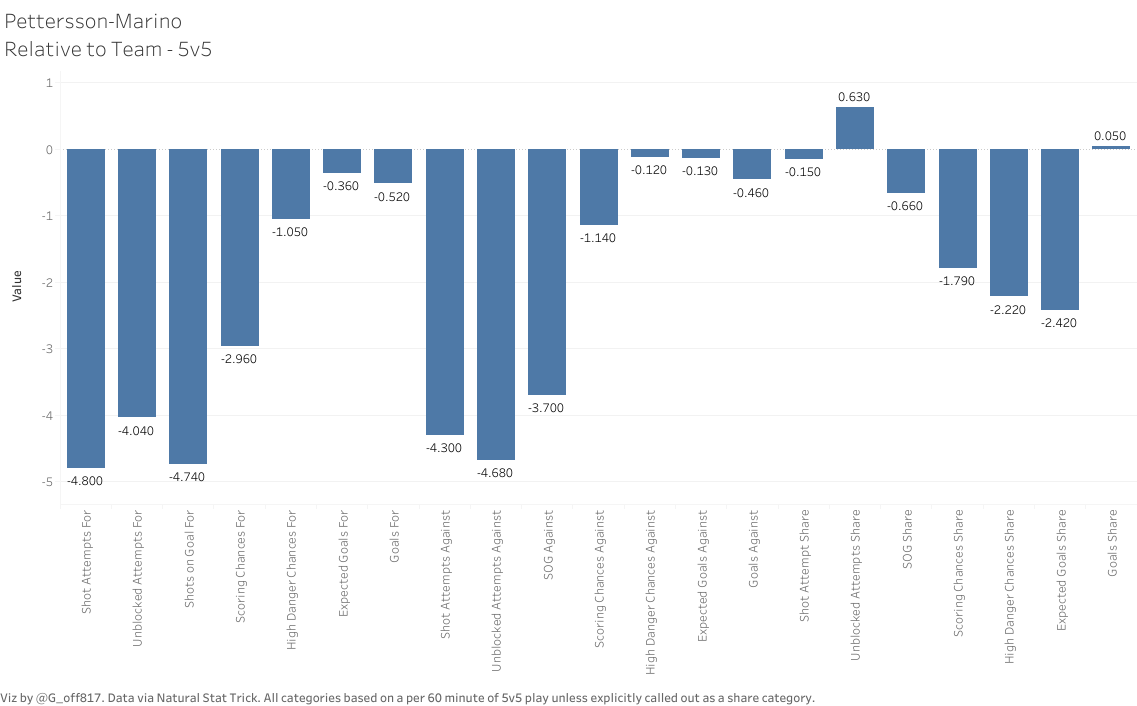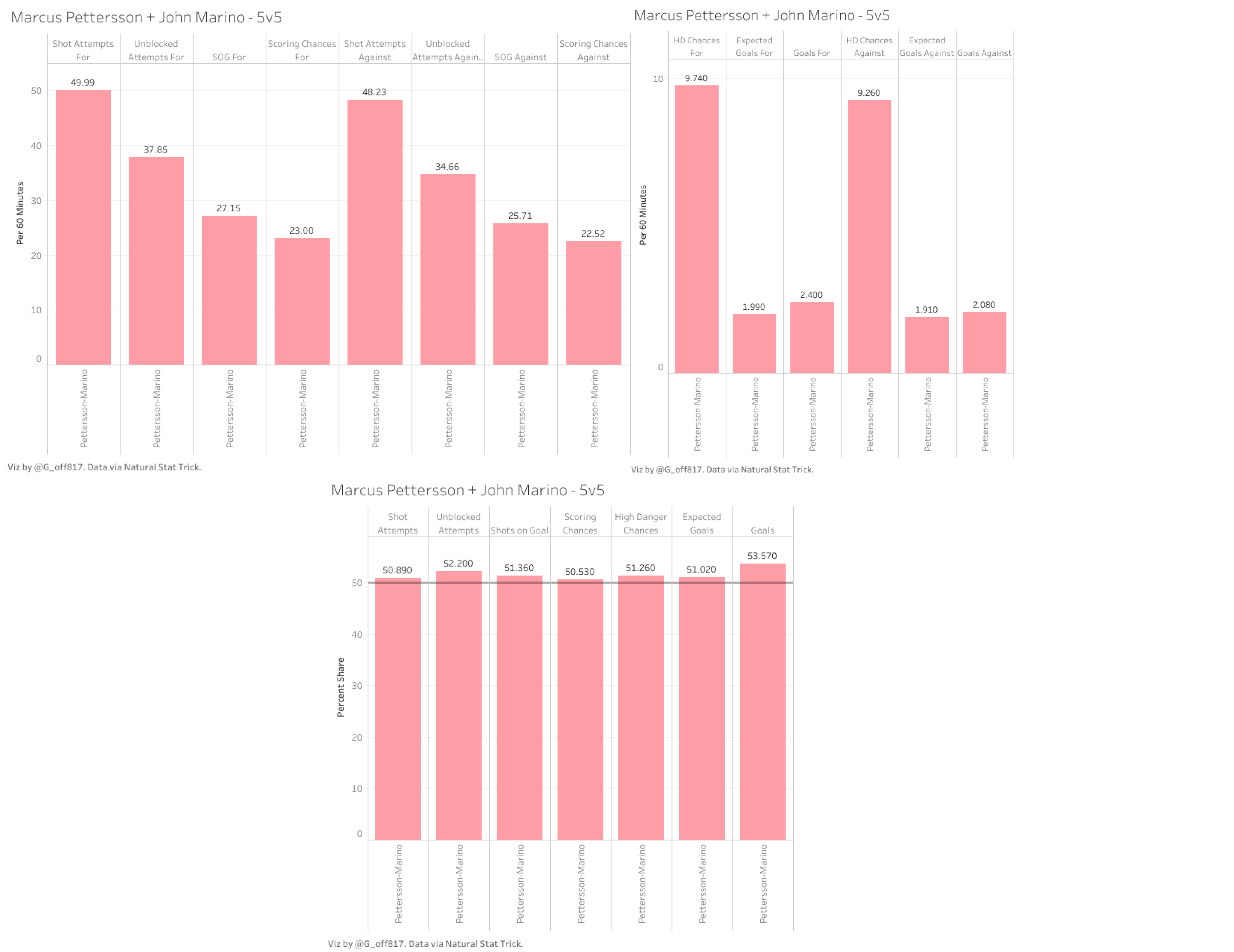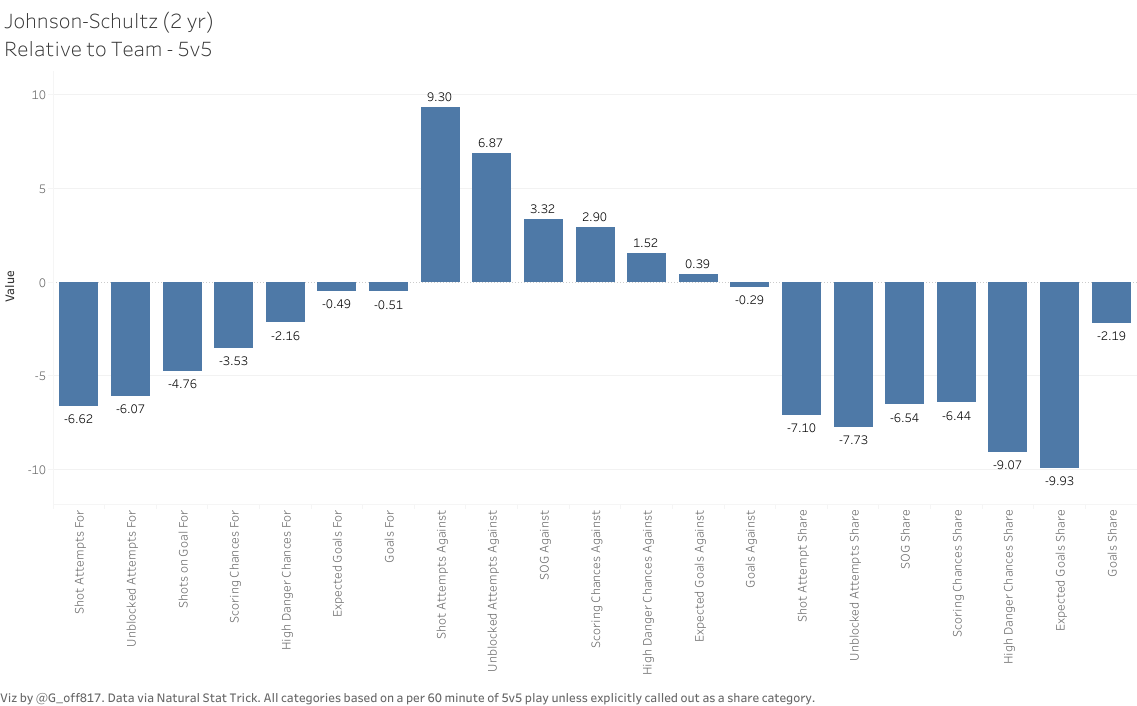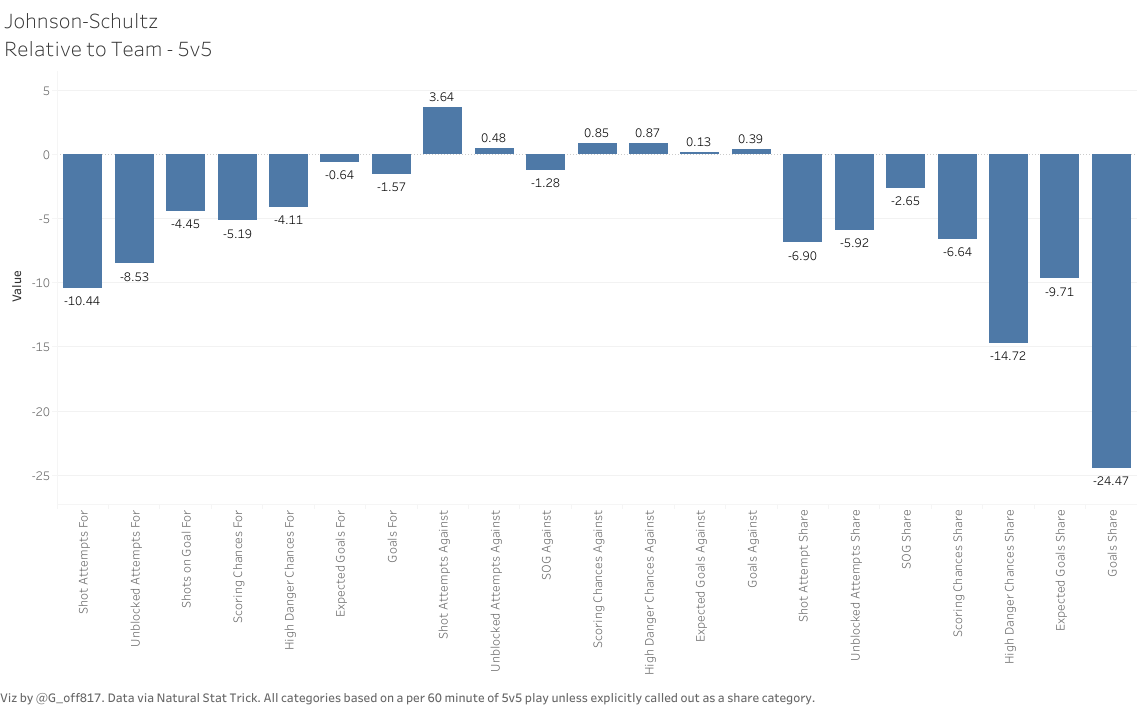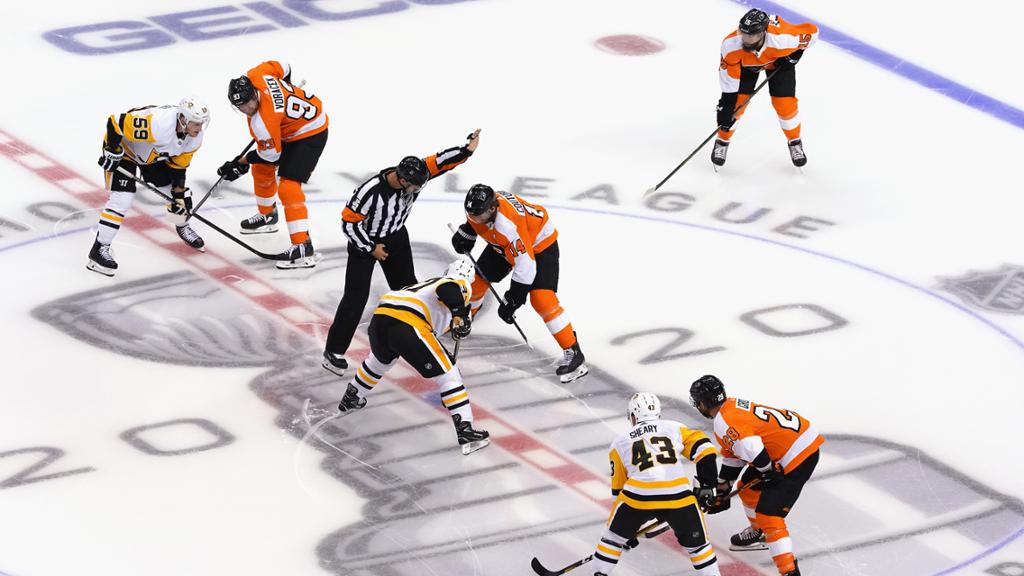
Part 2 of this series focusing on the units the Penguins will be deploying come Saturday’s Return to Play puck drop focuses on the blue line, a 6 man group that’s finally fully healthy for basically the first time since December.
[You can read Part 1: The Forwards here.]
The phrase “fully healthy” always comes with a caveat for the Penguins, but having a fully healthy blue line is overwhelmingly important for two distinct reasons:
- No one is hurt
- The Penguins were maybe the best team defensively in the league in October and November
Point 2 is captured below. As a point of order, the further down the line is, the better. It means the Penguins, per 60 minutes of 5v5 play, are limiting the amount of clear cut shots and chances against (expected goals, here) over a 5 game average.
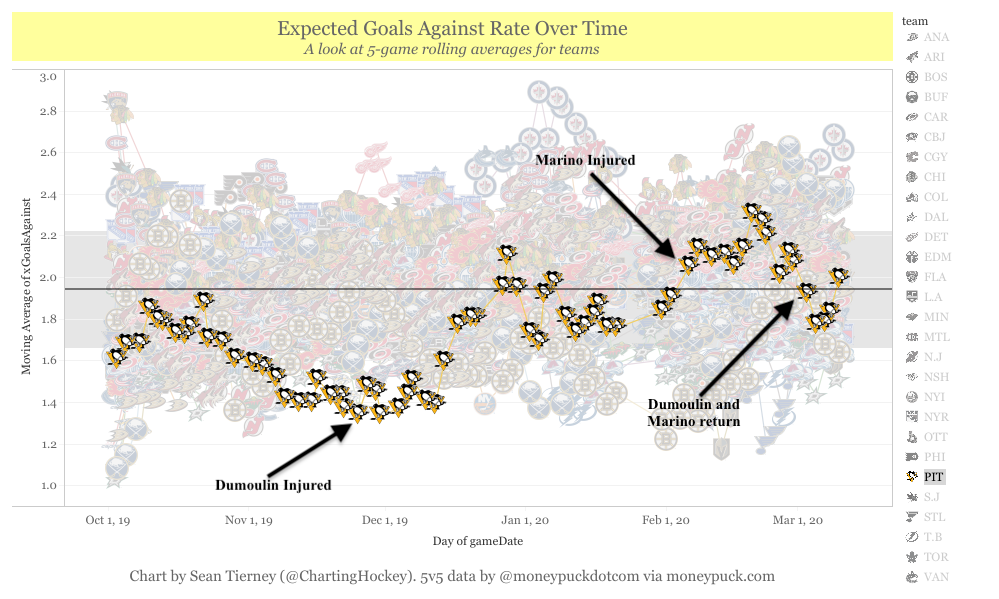
In fact, Dumoulin going down injured was an inflection point for the Penguins expected goal suppression: from the moment he went down, the Penguins started allowing more and more quality looks against than they did prior to his injury.
When the calendar neared and turned to 2020, they had a few weeks where they started trending back in the right direction until…they didn’t anymore. Then John Marino broke his jaw and the Pens started floundering. It wasn’t quite as bad as the likes of Anaheim, Buffalo, Chicago, or New Jersey, but it was around 1 extra expected goal per 60 minutes than they allowed with their full complement of defensemen.
Things started trending in the right direction around when both returned on March 3rd, but then the shutdown happened and here we are, talking about some weird tournament that kicks off on Saturday.
Dumoulin-Letang
No defense pairing has been more influential in the Penguins success than Brian Dumoulin and Kris Letang over the last 5 years.
To that end, no defenseman has been more impactful for the Penguins over the last decade than Kris Letang.
Anyone trying to sell you anything different is chronicling the wrong team.
In fact, whether it be the 20 games and 301+ minutes of 5v5 play they played together this season or the 160 games and 2287:16 minutes of 5-on-5 time together since the start of the 2017-18 season, the results for these two together have been the same.
That is, the Penguins dominate play every time these two are out on the ice. This season in particular, though, saw Dumoulin and Letang control the share of events that took place nearly across the board (save for expected goals) while they were on the ice to a higher degree than their 3 year average (illustrated by the graph at the bottom). Just in the shot-based data buckets alone, the Penguins controlled 58%+ of each. That means that for every 10 shot attempts/unblocked shot attempts/shots on goal that happened over the course of a game at 5v5 while Letang and Dumoulin were on the ice, the Penguins registered nearly 6 of them.
The top two graphs break down that for/against dynamic at 5v5 per hour of play. On the left, you’ll see that, per 60 minutes of 5v5 play, the Penguins generated over one more shot attempt and unblocked attempt and nearly 3 more shots on goal with these guys out there compared to their 3 year average. On top of that, they were defensive stalwarts compared to their last three years, allowing fewer of everything (save for goals), including the high danger chances and expected goals seen in the right graph.
And, in spite of generated one fewer high danger chance and about a quarter of an expected goal less than the three year average, the Penguins scored over one more goal per hour at 5v5 with these two on the ice.
We can put that all into terms relative to the rest of the Penguins roster this season as well [Click here for the results over the last 3 seasons]:
What we have here is the Penguins production with Dumoulin and Letang on the ice together compared to when they’re off the ice.
As a note here, a positive number in the “For” and “Share” categories is good. It means that the Penguins see more of those events going in their favor when these two are on the ice. Negative numbers are good for the “Against” stats because you want to see less of the puck coming at your net when you’re on the ice.
So with Dumoulin-Letang running the show, the Penguins see 7.19 more shot attempts directed at their opponents net and generate 4.16 and 1.74 more scoring chances and high danger chances when they’re on the ice together compared to when they’re off the ice, for example.
Similarly, the Pens are allowing 3.67 and 1.96 fewer unblocked shot attempts and scoring chances when they’re on the ice together compared to when they’re not.
Putting it all together for the overall shares of the events, the Pens are controlling a positive percent increase in the total events taking place when these two are on the ice together, suggesting that they are spending more time in the offensive zone dominating their opponents.
Via HockeyViz.com’s Environment Distiller, we can see exactly where the shot generation is coming from:
[A reminder that when looking at these maps, red indicates more shots compared to the league average, while blue reflects fewer. In other words, red in the offensive zone means the Penguins are generating more shots from those locations compared to the league average (good), while red in the defensive zone means they are allowing more shots than the league average from those locations (bad). Conversely, blue in the offensive zone is bad, while good in the defensive zone.]
This gives us a pretty solid idea as to why they saw a bit of an uptick in the High Danger and Expected Goals against categories from earlier. On the right, you’ll see a small little red blob in front of the Penguins net the seems to be a bit of an anomaly with it being surrounded by a lot of blue, showing that they are allowing more shots per hour of 5v5 play in that little ~50 square foot area around the goal. Cleaning that up would see their already low expected goals against per hour of 2.32 (9% less than league average) drop even more.
At the other end of the ice, the Penguins have found a lot of success in the mid-slot as well as seeing shooting lanes open up at the right point where Letang occupies, leading to a 2.83 expected goals for per hour of play (11% more than league average).
Few things will be more integral to the Penguins success this postseason than Dumoulin and Letang doing exactly what they’ve done over the last 3+ years.
Pettersson-Marino
And while the Dumoulin-Letang pairing is a key cog in the Penguins winning machine, perhaps no pairing will be more important to their immediate success than the second pairing of Marcus Pettersson and John Marino.
Though these two didn’t start the season together, their unification as the season wore on (and John Marino’s emergence as an absolute stud) kept the Penguins afloat defensively without the services of Dumoulin.
From January, just two weeks before Marino broke his jaw:
Best defensive lines this season (lowest expected goals against). Minimum 200 minutes played. https://t.co/qJ34bzwQWo pic.twitter.com/tnUAF9Tp04
— MoneyPuck.com (@MoneyPuckdotcom) January 24, 2020
They would only get to play about 100 more minutes together after getting that recognition, but their body of work this season in nearly 400 minutes of 5v5 ice time together was impressive, particularly on the defensive side of the puck.
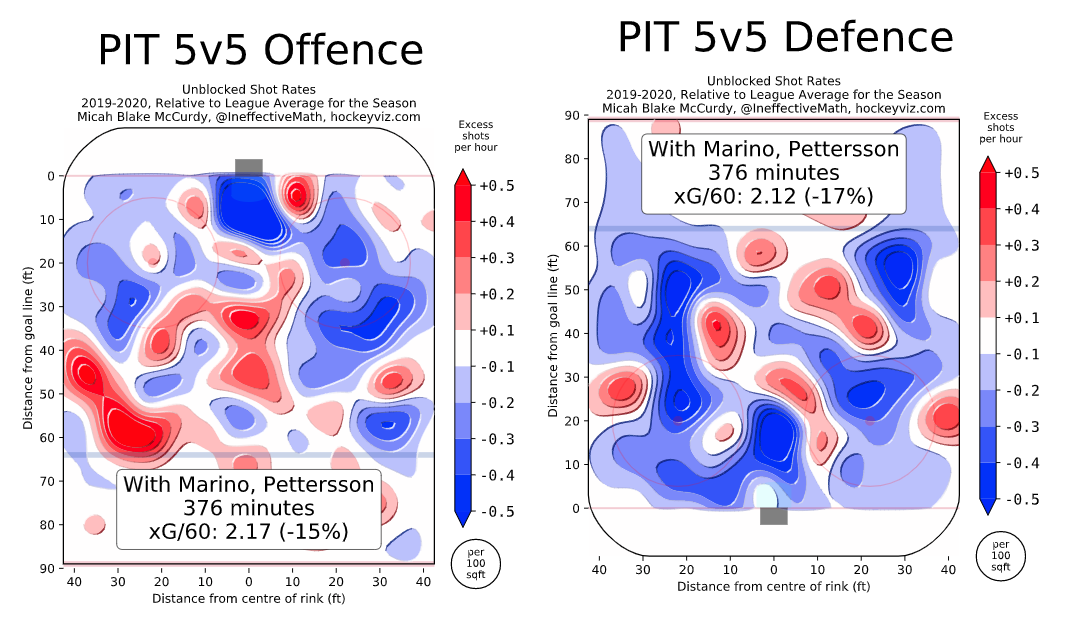
One moderately concerning thing here is the lack of any offense as their expected goals for per hour of 5v5 of 2.17 is 15% less than that of the league average. You would probably expect that to jump up in the playoffs as these guys, the #2 pairing, will see a bulk of time with the Zucker-Malkin-Rust line. To that end, Marino and Pettersson only saw 103 minutes with Malkin this season as Crosby’s injury elevated Malkin’s role, but in that short time, their 2.68 expected goals per hour found them up 5% versus league average.
But, perhaps more importantly, these two were rock solid in their own zone, both relative to the league and relative to the Penguins (which we’ll see in a minute). Opposing teams were simply unable to get anything going against them in the high danger areas of the ice (to the tune of 2.12 expected goals against per hour, 17% less than league average).
These trends of no offense at either end of the ice hold true when comparing their body of work to the rest of the Penguins roster.
When these two were on the ice together this season, the Penguins saw less of all events against than when they were off the ice. The Pens also generated more offense when these two were off the ice, but again, you would expect those “For” and “Share” numbers to go up with the Malkin line.
It’s not all doom and gloom because, even in the face of generating less offense relative to the team or league, the Pettersson-Marino pairing still found themselves above the 50% threshold in the shares of events that took place. In other words, more events took place in the offensive zone than the defensive zone with these two.
At the bare minimum, the Penguins have an extremely reliable second pair that’s going to give up very little to the opposition. They’ll have support from solid speedy, defensive wingers like Rust and Zucker or the Marleau-McCann-Hornqvist to help provide cover in their own zone. But if you’re able to combine that with an uptick in offensive production, which they almost assuredly will with Malkin, the middle six group of forwards will be in better shape than they were at any point last season.
Johnson-Schultz
And then, there’s the third pairing.
Early in the season, there was a redemption arc being perpetuated throughout the Penguins Hockey Cinematic Universe (present company included) because Jack Johnson was improved over last season, albeit slightly.
When Dumoulin went down injured, the arc became an ark and sank into the Mon, taking everyone with whom Johnson shared the ice down with it.
With the increase in role and ice time, Johnson turned in performance after performance reminiscent of everything he did a season prior.
The Penguins were worse off for it.
All the while, there was the pressing issue of Justin Schultz, who has missed parts of every season since joining the Penguins, topping 70 games played just once (2017-18) and playing just 46 after suffering a December injury, relegating him to the IR for half of December and all of January.
And, injuries aside, the Penguins may not have employed and deployed a more inconsistent player than Justin Schultz since the 2017 Cup win.
[For more on that, from late February: Do the Penguins Have a Justin Schultz Problem?]
Within that stretch is a stretch of 74 games and 552+ minutes in which Justin Schultz and Jack Johnson have shared the ice together at 5v5.
The results have been nothing short of atrocious.
Whether it be over the last two seasons (top) or the 168:37 across 45 games this season (bottom), the results are the same: these two see less generated offensively, more generated against them, and less of an overall control of the events taking place while they are on the ice relative to the rest of the team.
Simply put: the Penguins are a better team when these two aren’t on the ice.
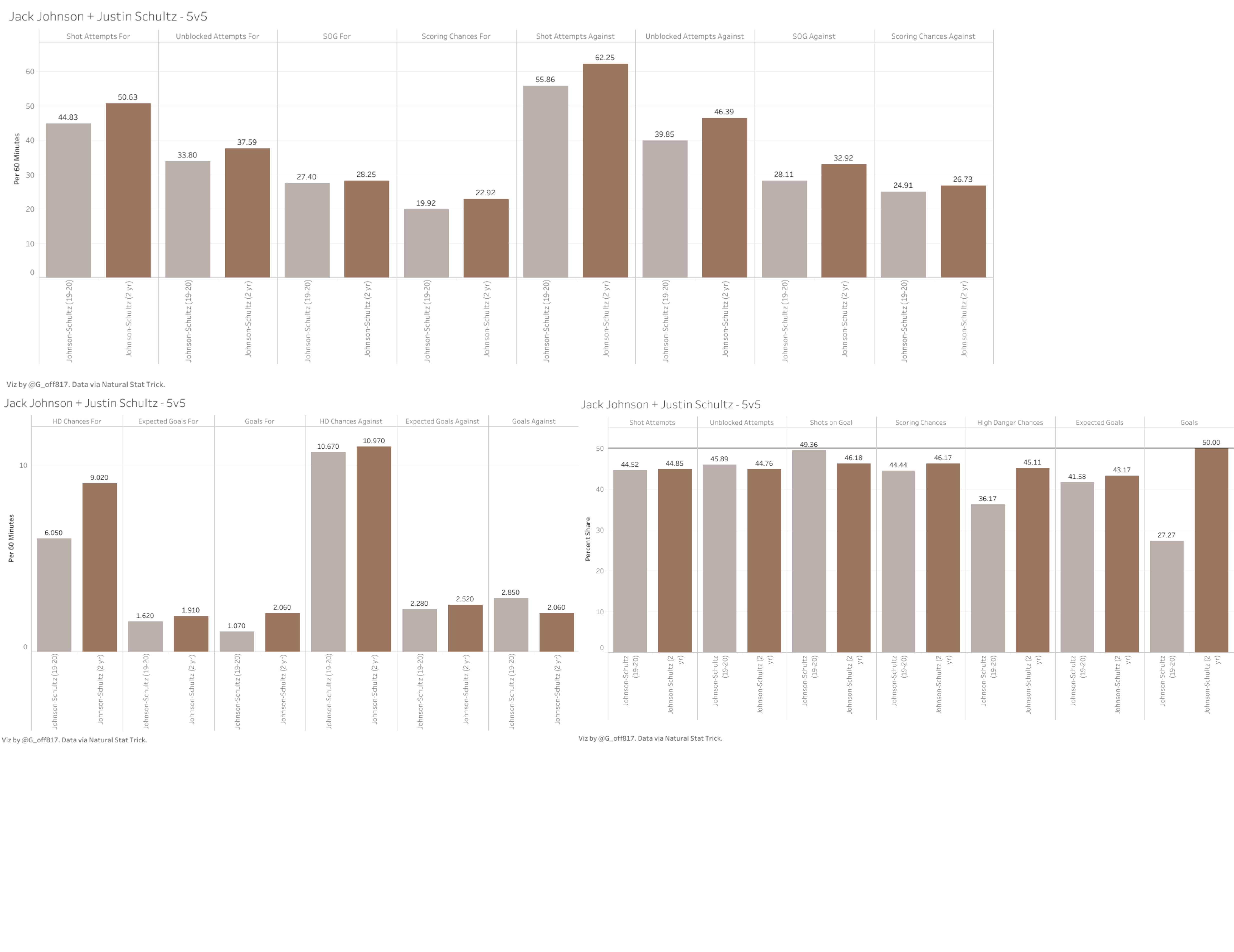
There is, however, a case to be made that they’ve improved this season (at least defensively), bearing in mind that they saw less than half as much time together this season compared to last season:

Above you’ll see this season (top) and last season (bottom). A sample size of 168 minutes isn’t a lot, but over that stretch, these two became an even bigger black hole for threatening in the offensive zone relative to the rest of the league, generating 0.59 fewer expected goals per hour of 5v5 play than last season and seeing nothing generated from high scoring areas. Defensively, though, they allowed 0.5 fewer expected goals against, so you almost have to take the W where you can get it here.
But not all is last here because there is a way for Mike Sullivan to make the most out of a bad situation: deployment. As mentioned in the Schultz piece linked above:
…deployment is the great equalizer in this sport and Mike Sullivan expertly deployed his extremely good defensive specialist forwards with Johnson to give him support in their own end of the ice. In doing so, it papered over a lot of his cracks.
We talked in the forwards post about how good defensively McCann and the Tanev-Blueger-ZAR lines were this season and, in the case of playing with Jack Johnson, did a lot to make the Penguins less susceptible to getting hammered in the own end of the ice:
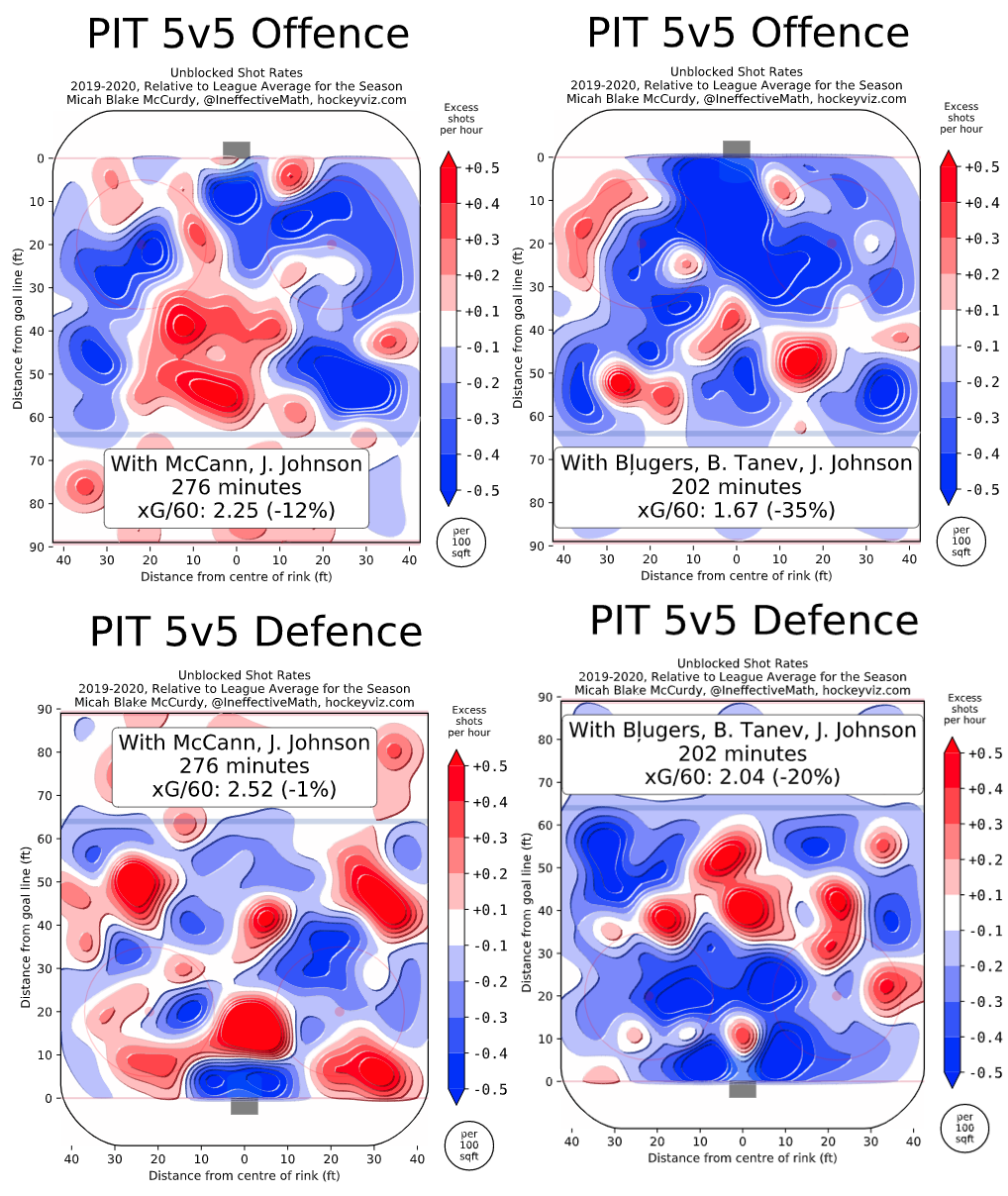
With McCann and Johnson sharing the ice (and, hopefully by extension, Schultz this summer), the Penguins were closer to league average in their own end of the ice, allowing 1% less expected goals per hour than league average at 2.52, allowing an excess of shots per hour from just the mid-slot and cleaning up in front of the net (bottom left map). The offensive zone (top left map) was a bit of a mess in terms of generation, but we’d probably prefer to see that than a mess in the defensive zone.
With the 4th line deployed with Johnson (bottom right map), the Penguins were even better defensively. They allowed an excess of shots from the mid-slot still, but the area was much, much smaller. Almost everywhere else, save for the center point, was deep in the blue territory. That translated to an expected goals against per 60 minutes of 5v5 play of 2.04, down 20% from league average.
In other words, while Jack Johnson has shown in his Penguins tenure to be a defensive liability, the bottom 6 for the Penguins provide enough cover to make the 5-man, down-roster unit extremely difficult to break down.
So if you see a lot of McCann’s line and Blueger’s line out with the Penguins 3rd pairing, this is probably why. And it may be enough to make the Penguins a real, imposing threat in this summer hockey tournament.
Up next, we’ll take a look at the Murray/Jarry dynamic and definitely have a normal conversation about that!
Add The Sports Daily to your Google News Feed!

